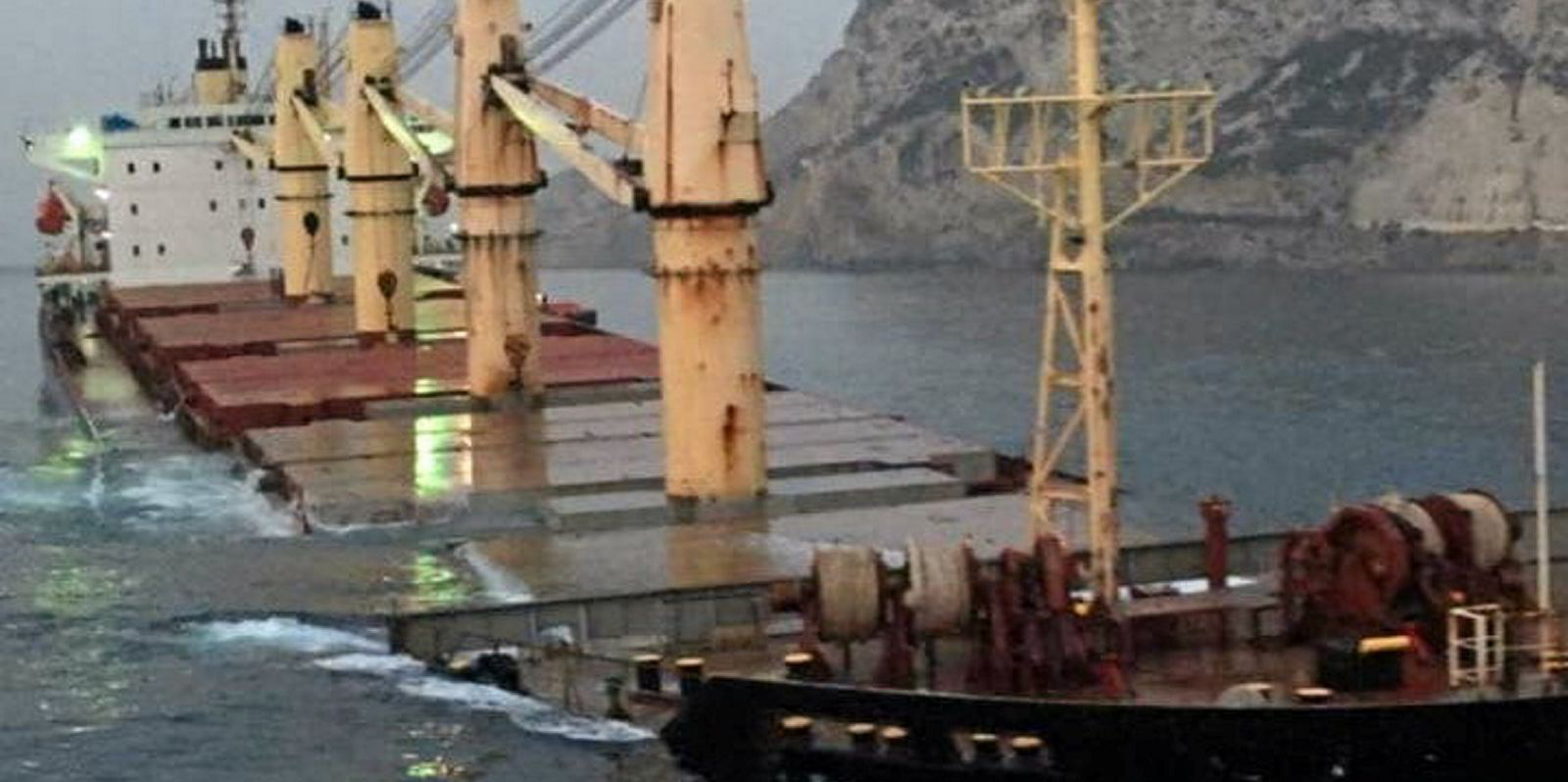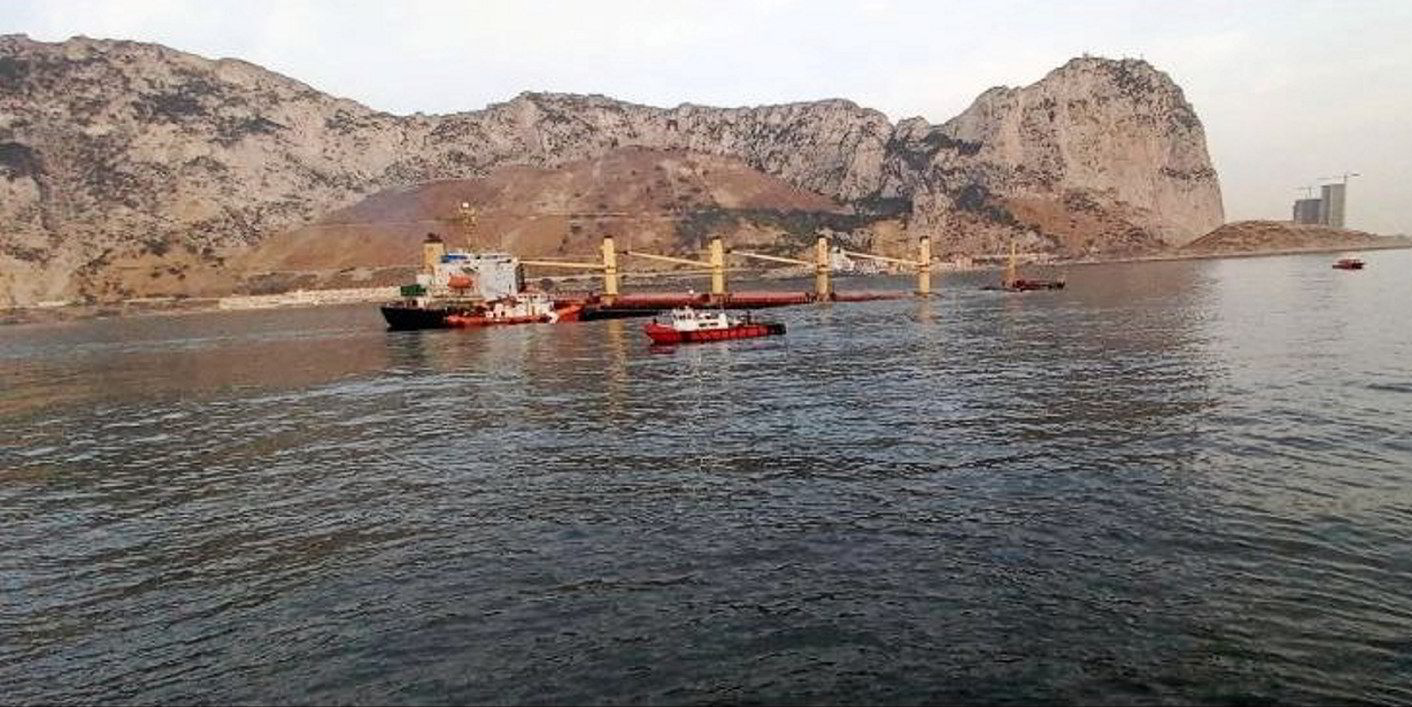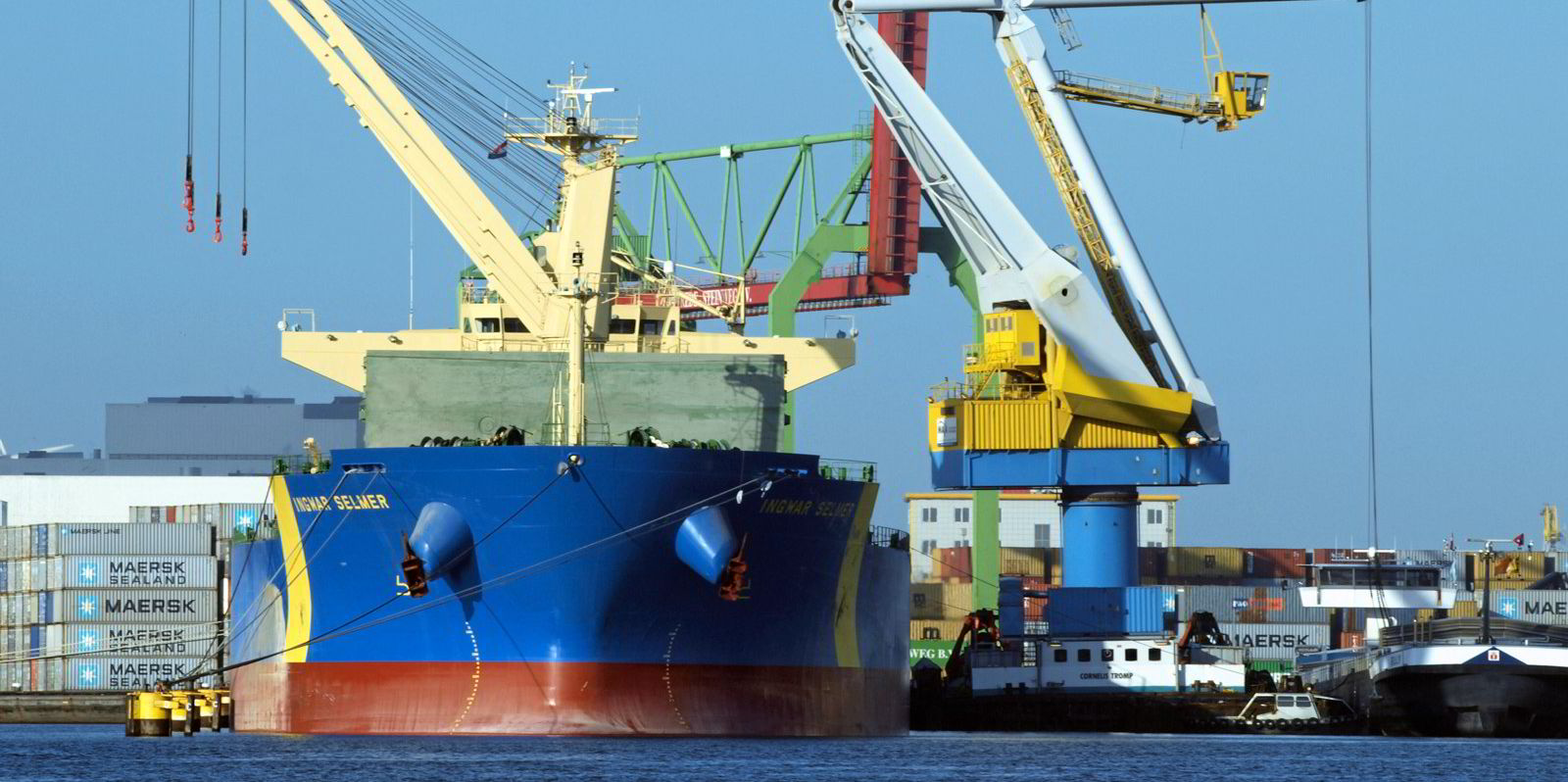Salvors are in a race against time to remove fuel oil from a grounded bulk carrier off Gibraltar and attempt a refloating operation.
TradeWinds is told that the shear forces acting on the hull of the 35,362-dwt OS 35 (built 1999), in its grounded condition, are already substantially in excess of the maximum allowed.
“Time is critical to prevent further damage to the hull,” said one salvage expert, who explained that further deterioration of the hull strength could make a refloating operation difficult.
The hull of the OS 35 is described by the Gibraltar Contingency Council as being in a stable condition, but its bow is submerged 1.2 metres into a sandy seabed.
Divers have reported that the hull has already suffered substantial damage, including a gash amidships below the waterline, about 10 metres by four metres.
The Gibraltar government will be keen to refloat the vessel and prevent a potentially prolonged and costly wreck removal.
A specialist team of marine salvors from the Netherlands has been sent to conduct a full on-site assessment.
The Gibraltar Port Authority said it is carrying out technical planning, alongside surveyors and salvors, before carrying out a salvage operation. “This may involve removal of the fuel loaded in the vessel as soon as possible,” it said.
Oil pollution prevention measures have been put in place and the Gibraltar government said its priority is to protect beaches on the eastern side of the rock, including the nearby Catalan Bay.
The OS 35 was loaded with 183 tonnes of heavy fuel oil, 250 tonnes of diesel and 27 tonnes of lube oil when it departed Gibraltar on Monday on a voyage to Vlissingen in the Netherlands with a steel cargo.
It is understood that US salvage company Resolve Marine, which has substantial salvage assets in the region, was appointed for the initial emergency response and salvage work under a Lloyd’s Open Form with a special compensation protection and indemnity clause contract.
The grounding occurred on Monday when the OS 35 hit the 162,000-cbm LNG carrier Adam LNG (built 2014), which was at anchor, as it left Gibraltar. Pilots grounded the bulker to prevent it sinking.
The Adam LNG suffered damage to its bow.
The bulker’s P&I insurer could end up on the hook for the cost of the salvage and oil pollution prevention measures if the OS 35 is found liable for the accident.
The OS 35 has P&I cover with British Marine, the largest of the commercial fixed premium P&I providers. British Marine, which provides P&I and hull and machinery cover, is backed by the giant Australian QBE insurance group.
The Adam LNG’s P&I cover is with North P&I Club.(Copyright)





